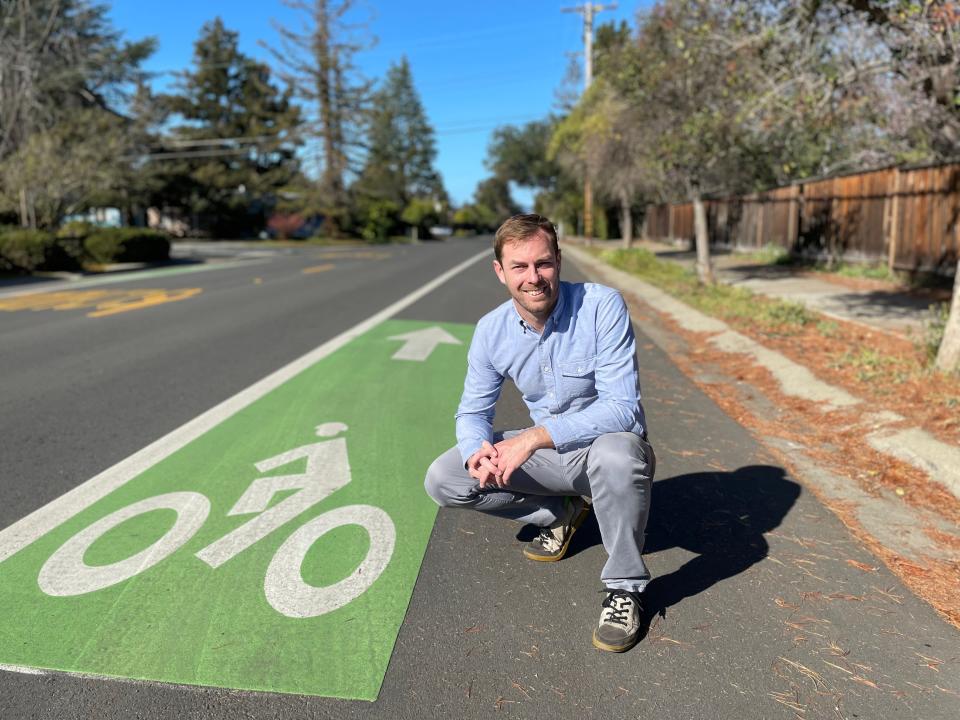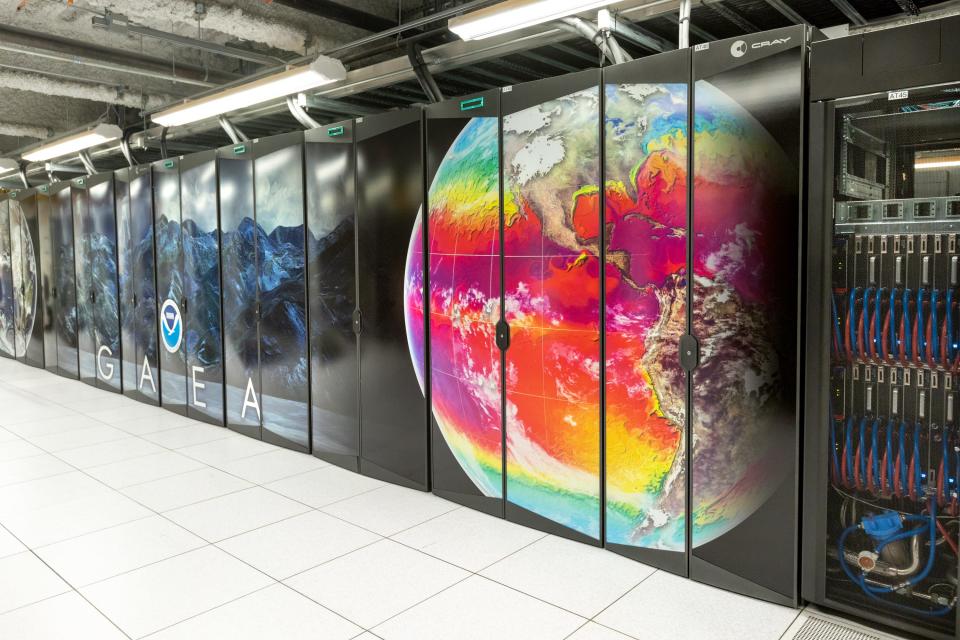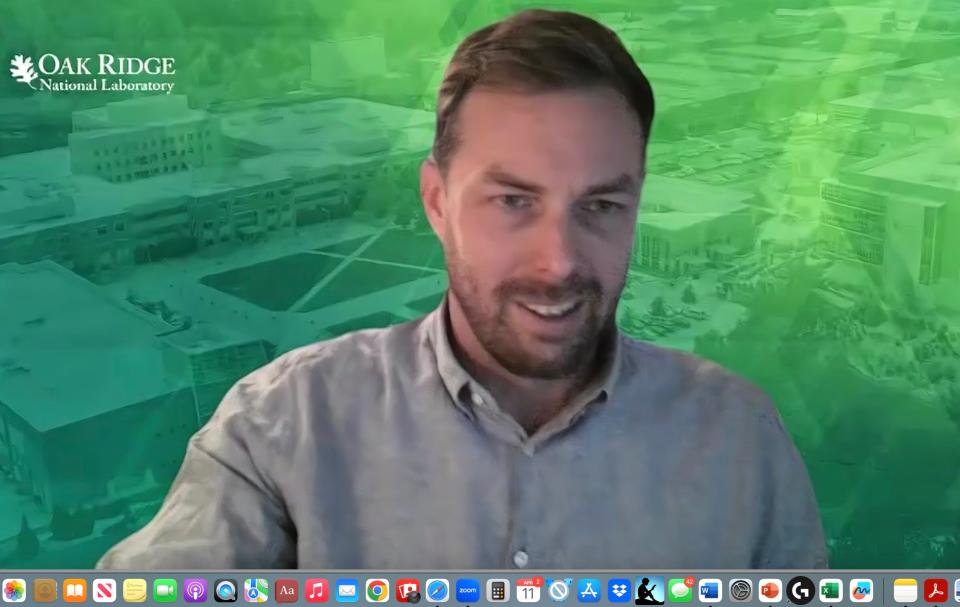Oak Ridge lab focuses on "net zero" game changers to slow Earth's warming
The huge challenge of shifting away from activities that produce greenhouse gases, removing carbon dioxide from the atmosphere and capturing CO2 emissions from industrial sources, such as fossil fuel power plants, breweries, distilleries and fertilizer manufacturers, to slow climate change, has been “likened to the Manhattan Project,” said David McCollum, senior scientist and climate researcher at Oak Ridge National Laboratory.
He spoke recently to Friends of ORNL on the decarbonization challenge, including efforts to help nations transition from fossil fuels to clean, carbon-free energy sources without harming people and natural life.

In response to questions, he said the economics of CO2 reduction and capture are improving, thanks to technology innovations and government support from, for example, the Inflation Reduction Act of 2022. This law provides incentives for households and companies to invest in solar and wind energy, install electric vehicle chargers, weatherize buildings, and many other activities. For CO2 in particular, the legislation incentivizes capturing the climate-altering greenhouse gas and sequestering it underground in geologic reservoirs or selling it to firms that can use it in ways such as to make liquid fuels and building materials, accelerate plant growth in greenhouses and carbonate beverages.
McCollum said ORNL researchers are working on developing and testing various technologies for avoiding CO2 emissions and for removing carbon from the air, called direct air capture. Others are exploring ways to transport CO2 to customers, such as by railroad or pipeline, as well as techniques to make new recyclable polymer products from waste carbon.
Window of opportunity closing
This type of work and a worldwide energy transition are urgent this decade because, McCollum said, the world’s climate scientists have determined that it is “unequivocal that human influence has warmed the atmosphere, ocean and land” and the window of opportunity is closing to stave off the worst impacts of climate change.

“It’s a fact that human activities are responsible for global warming,” he said, noting that the world’s climate researchers no longer state in United Nations assessment reports that they merely have “high or very high confidence” that human influence, such as industrial, agricultural and transportation releases of carbon dioxide, methane and nitrous oxide, is triggering a warming of the earth’s surface that can lead to devastating climate change.
Because of the steadily rising emissions, according to the latest assessment report of the UN’s Intergovernmental Panel on Climate Change (IPCC), global average surface temperatures measured between 2011 and 2020 average 1.1 degrees Celsius (2.0 degrees Fahrenheit) higher than the prevailing global temperature in the preindustrial period between 1850 and 1900.
McCollum said the largest emitters of greenhouse gases have been the United States, Canada, Europe, Australia, New Zealand and Japan, but “the share of emissions from China and other Asian countries is growing substantially.”
According to the IPCC’s Sixth Assessment Report’s volume on mitigation of climate change, global temperatures will stabilize when the world reaches net zero carbon dioxide emissions – that is, the amount of CO2 emitted to the atmosphere does not exceed the amount absorbed (e.g., by trees) or technologically removed from it.
“If we achieve net zero CO2 emissions by the early 2050s,” McCollum said, “the earth’s surface temperature is estimated to land at about 1.5 degrees Celsius higher than the global temperature in the preindustrial era, and 2 degrees Celsius higher if we don’t achieve net zero CO2 emissions until the 2070s.
“According to the vast body of science underpinning the Sixth Assessment Report, we are not currently on track to limit warming to 1.5 degrees Celsius. Under current policies our global temperature could rise to 3.2 degrees Celsius over the pre-industrial temperature."
That would be bad news for humankind, causing drastic increases in the frequency and duration of extreme weather, including heat waves and drought (with the accompanying wildfires and shortages of food and water), as well as in sea level rises and flooding.
McCollum, who contributed to IPCC’s Technical Support Unit for the Sixth Assessment Report, also leads ORNL’s contributions to the Net Zero World initiative, which leverages expertise across U.S. government agencies and the Department of Energy national laboratories, in partnership with other governments and philanthropies, to accelerate the decarbonization of global energy systems.
The good news, McCollum said, is that “there is evidence of increased climate action” to slow climate change.
“Some countries have achieved a steady decrease in emissions consistent with limiting warming to 2 degrees Celsius. Climate laws in 56 countries cover greater than 50% of global emissions. Zero emissions targets have been adopted by at least 826 cities and 103 regions. These were the numbers back in 2021; they are undoubtedly higher today.”
The U.S. climate goals, which provided motivation for laws passed during the Biden administration – the Bipartisan Infrastructure Law, the CHIPS and Science Act and the Inflation Reduction Act – are to reduce greenhouse gas emissions 50 to 52% below 2005 levels by 2030, establish a 100% carbon-pollution-free power sector by 2035 and achieve a net zero emissions economy by 2050.
McCollum said there has recently been great interest in achieving negative emissions through direct air capture (DAC) technologies and via bioenergy crops grown on marginal land combined with carbon capture and storage.
“You grow plants that suck carbon out of the air, and then when you convert the biomass in an energy plant to fuel, you capture the emitted CO2 and put it underground or in an otherwise stable storage medium,” he explained.

He gave an example of how ORNL researchers Thomaz Carvalhaes and Nasir Ahmad employed decision science methodologies (quantitative techniques to inform decision making, an area in which McCollum has expertise). Their goal was to determine how many of the 62,000 buildings in Knoxville are optimal candidates for ORNL-developed UrbanDAC systems that perform small-scale direct capture by tapping into existing HVAC capacity at commercial buildings.
The effort was inspired by Kashif Nawaz’s ORNL project called “intensified carbon capture using buildings infrastructure.” The researchers identified 200 suitable Knoxville buildings that, for example, had low flood risk and were located near railroads (assuming that trains might be used to transport captured CO2).
McCollum said ORNL researchers and partners are working on many different projects in support of the Sustainable Development Goals established by the 2015 Paris Agreement and the technologies needed to facilitate an energy transition to carbon-free energy sources.
Besides capture and storage of CO2, the ORNL efforts focus on making advances in net zero game changers such as rapid charging of electric vehicles, reliable power grid operation using renewable energy sources, clean manufacturing, biofuel for aircraft and ships, HVAC devices and refrigerants, fission and fusion energy, solar energy, hydroelectric power, geothermal energy and safe, long-lasting, rechargeable batteries.
He mentioned Oak Ridge’s historical contributions to the understanding of the risks of climate change and the need for decarbonization. He said that in 1974 Alvin Weinberg, former ORNL director and a nuclear power pioneer and promoter, started a “trans-scientific” research center for energy issues called the Institute for Energy Analysis as a division of Oak Ridge Associated Universities.
“It was absolutely world class and world leading and one of the first in the whole world to look at the link between CO2 in the atmosphere and its effect on global warming,” he said. “It was a hub for decision science and analysis and ultimately produced some of the legendary thinkers in the field.”
He remarked that a few ORNL contributors to the IPCC shared in the 2007 Nobel Peace Prize, which was awarded to the IPCC and former Vice President Albert Gore of Tennessee “for their efforts to build up and disseminate greater knowledge about man-made climate change, and to lay the foundations for the measures that are needed to counteract such change.”
This article originally appeared on Oakridger: ORNL lab focuses on "net zero" game changers to slow Earth's warming

